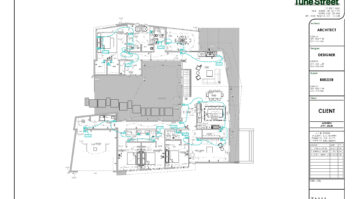In my early days as a product manager at Infinity, John Stiernberg* was the ultimate boss. That’s because he clearly communicated what was expected and held me accountable to those expectations. At the onset of any new project, he required me to submit a planning document that stated my objectives, the methods for attaining them, and the benefits to our company, along with a budget, schedule, and participant list. Once approved, the plan set me free to deliver the things I promised and paved the way for me to advance.

Mike “Sparky” Detmer ([email protected]) is president of Niles Audio
Don’t you wish you had it so cut-and-dry? In some instances it can be, unless you’re dealing with a segregate boss like an architect. I frequently hear that architects are the best source of referrals for a residential systems integrator, but pleasing them can be as elusive as spotting aliens in Area 51. So to uncover a few best practices on managing your architect relationships I tapped the expertise of a 35-year industry veteran. Here’s the advice of Franklin Karp, former president of retail powerhouse Harvey Electronics and current COO of Audio Video Systems Inc., one of the premier residential systems integration firms in the Big Apple:
1 Clients are never wrong, even if they are
The last thing architects want to hear are complaints from their clients regarding the performance of subcontractors like your firm. Just as third-party endorsements carry more weight in the minds of others, client complaints weigh heavy on your credibility and can jeopardize future job referrals from coming your way. Karp said, “A big key to success is making the architect look like a rock star, regardless of cost.” He went on to emphasize, “Referrals drive the business, so nothing can make your architect look bad, because he’s your lifeline.”
2 Support yourself by supporting others
Support comes in many flavors like education, communications, and prompt follow up. On the matter of education, Karp insists on communicating clear talking points to the client and architect alike about the technology you provide. “Don’t just talk iPads,” he said. “Explain fast-moving technologies and why clients need integrated systems that leverage a variety of technologies to provide a better and more secure lifestyle.”

Thirty-five-year industry veteran Franklin Karp said that last thing
architects want to hear are complaints from their clients regarding the performance of subcontractors like your firm.This advice carries over to dealing with other subcontractors on the job too. “Make sure that the GC [general contractor], electrician, and decorator are all in the loop so they are not calling the architect and complaining about you,” Karp pointed out. He cited proactive involvement with the GC and other subs as the best way to keep things flowing smoothly. Providing a brief overview of what you are doing, why you are doing it a certain way, and the benefits involved adds a level of clarity that prevents problems and preserves your integrity.
3 Focus on aesthetics
When the job is done, you will be judged on two things: How does it work and how does it look? Naturally, you’ve got to make the systems that you install work well. Easy-to-operate, always reliable, high-performance systems are why you are on the job to begin with. However, you can install the most stellar of systems, but if it compromises the architect’s aesthetic vision you’ve failed. Karp puts it bluntly, “Don’t interfere with their (architect’s) aesthetic design,” he cautioned. “Even if it costs extra time and money, be sure you know what the architect envisions and give it to him or her.”
4 The time is the time
Be ready to deliver and install the system components on your designated dates. Many times GCs don’t have the flexibility to change the workflow to suite your schedule. Rather, they require you to adhere to theirs. That’s why Audio Video Systems insists on seeing the scheduled workflow up front, so their managers can be sure to have all the gear ordered, staged and installed/programmed on schedule.
5 Raise your standards
“Create an environment that reinforces and improves your processes,” Karp coached. This can be done through a series of checklists for each phase of the job schedule and a review of each project after completion. CEDIA teaches this discipline in certification courses, or as an alternative you can get a project management certificate from your local community college. The science for mapping and improving processes is available for the asking, so ask.
*John is the founder and principal consultant at Stiernberg Consulting, specializing in strategic planning and business retooling, he can be reached at: http://www.stiernberg.com.





